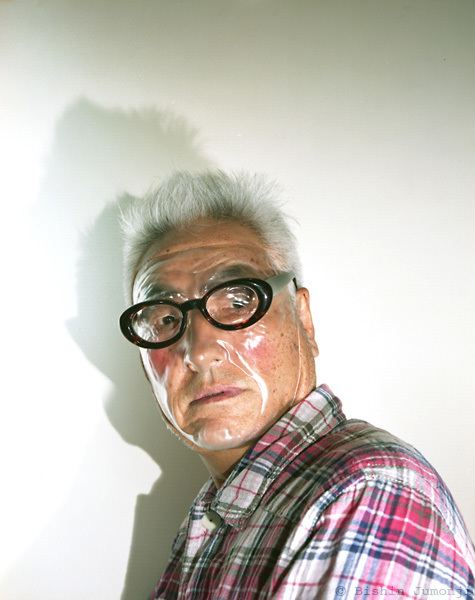Name Bishin Jumonji | Role Photographer | |
 | ||
Education Tokyo College of Photography | ||
Bishin Jumonji (十文字 美信, Jūmonji Bishin) is a photographer who has done advertising, portrait, architectural, and other work.

Jumonji was born in Yokohama on 4 March 1947. After studying at the Tokyo College of Photography he worked as an assistant to Kishin Shinoyama and went freelance in 1971, when he was the cameraman for advertisements for Matsushita Electric and Shiseido products.

The association with Matsushita would later bring awards from the Art Directors Club every year from 1975 till 1979. Jumonji has continued to do editorial and commercial work (notably for Hayashibara Biochemical Laboratories); while much of this owes a lot to its art direction as well as photography, Jumonji's advertising work has been uncommonly ambitious and witty.

In 1972 he joined an exhibition of portraits (in Kinokuniya Gallery at Shinjuku) of Simon Yotsuya, with nine other photographers.
Jumonji had started taking his "Untitled" series of portraits of people framed to exclude their heads in 1971. In 1972, these appeared in the magazine Camera Mainichi and were shown in the Neikrug gallery in New York; a year later they were included within "New Japanese Photography", at the New York MoMA.
Down till 1980, Jumonji made nineteen trips to Hawaiʻi, photographing the islands and photographing and interviewing elderly first-generation Japanese immigrants. The series counterposes color photographs of Hawaiʻi and black-and-white portraits of the people living there. Installments were published in Camera Mainichi in 1979 and the set was exhibited in 1980, when it won the Ina Nobuo Award. It was published, as Orchid Boat, in 1981.
Jumonji's second published collection was Kéntauros, a large-format booklet of black-and-white photographs of the members of the motorbike organization Kéntauros (then a popular brand) striking macho poses with switchblades and other fashion accessories.
In 1981, Jumonji went to Indochina to photograph the religious customs of the Yao people. In 1983–4 he visited Thailand, Burma and Laos. The result was published as Sumitōtta yami in 1987.
Jumonji had started photographing gold works of art in 1981. The first exhibition of the results was in Matsuya department store (Ginza), in 1987. This work culminated in the large and lavishly produced book Ōgon fūtenjin, published in 1990. This won the Domon Ken Award the following year. Some of these works would also be shown in two of a set of four volumes of stereoscopes, all photographed by Jumonji and published in 1993–4.
Jumonji started photographing architecture and gardens in 1988, and specifically the Katsura Detached Palace in 1991.
Jumonji photographed Matsumoto Kōshirō IX for a collection of black-and-white portraits of the same title; in 2005 he published a second volume, Nippon Geki-gan, of monochrome portraits of actors taken with a large-format camera shortly before or after performance.
In 1998, Jumonji started work on Wabi, his ambitious attempt at a depiction (in color) of the Japanese aesthetic ideal of wabi. The project started with cha-no-yu but branched out into scenes of the quotidian.
Jumonji exhibited composite photographs of four Japanese waterfalls at the Shiseido Gallery (Ginza) in June and July 2004.
Jumonji's photographs have appeared in Zoom and Stern.
